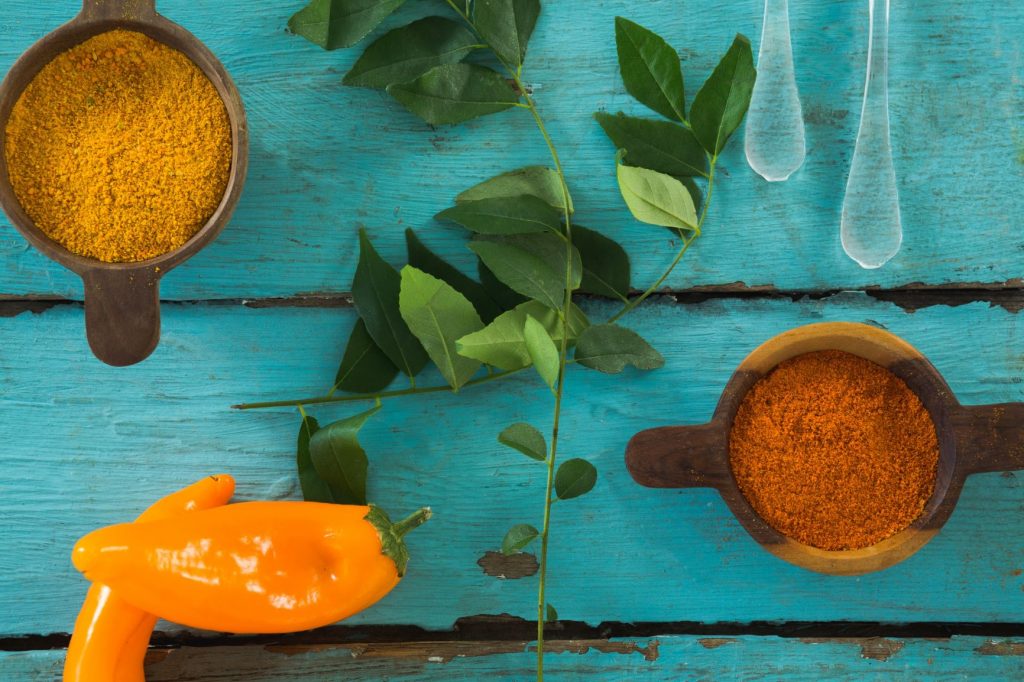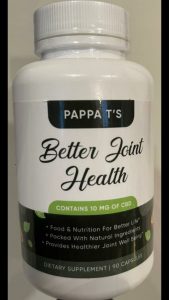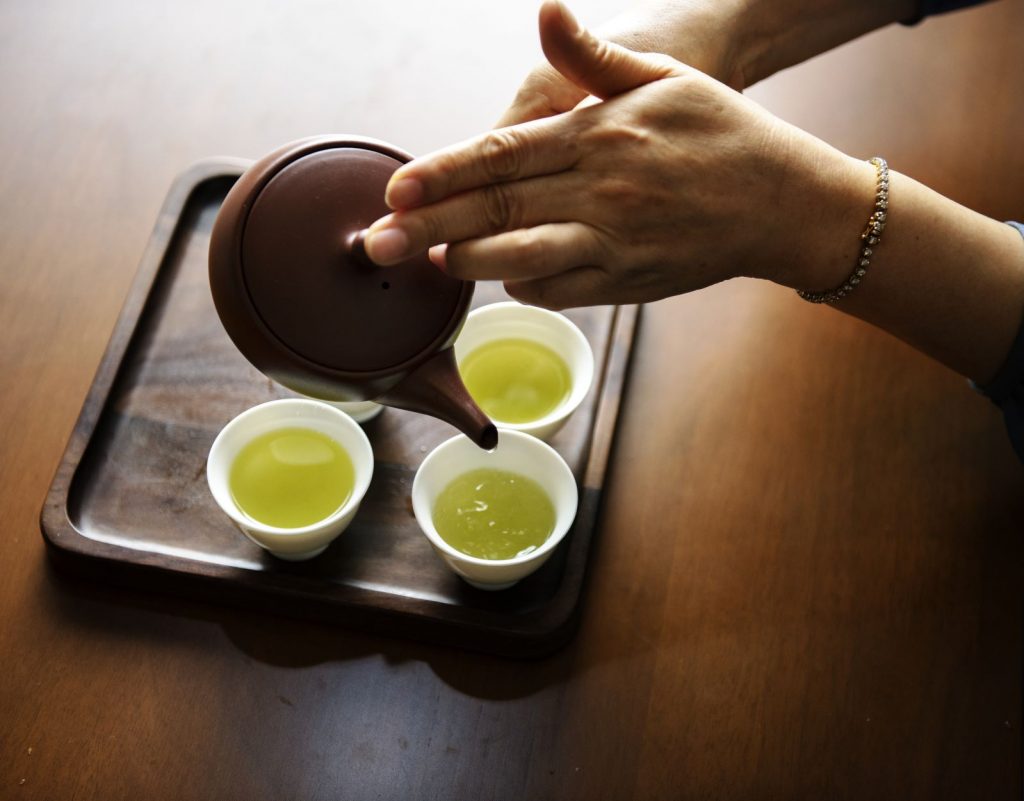People wonder how to relieve arthritic pain when they are afflicted with the condition. Arthritis is connected to a variety of conditions that involve pain and inflammation in the joints.
Is it a degenerative condition, i.e., the symptoms tend to worsen over time, or is it a type of autoimmune arthritis with associated extra-articular symptoms, characterized by inflammatory flare-ups incessant clinical program?
There are two basic types of arthritis which are: osteoarthritis (OA) and rheumatoid arthritis (RA).
Osteoarthritis mainly occurs when cartilage wear causes bones to rub against each other, causing friction, damage, and inflammation.
Rheumatoid arthritis is a systemic condition that triggers symptoms throughout the body. It is an autoimmune disease and occurs when the immune system mistakenly attacks healthy joint tissue.
Doctors can prescribe medications to relieve arthritis pain, but they often recommend natural approaches as well.
Remember to speak with your doctor before trying any arthritis remedy, whether with medication or not.
- Check your weight
Your weight can have a significant impact on arthritis symptoms. The extra weight puts more pressure on the joints, especially the knees, hips, and feet. Experts of Rheumatology and Arthritis strongly recommend losing weight if you have osteoarthritis and are overweight or obese.
Your doctor can assist you in setting a goal and design a program to help you achieve that goal. Reducing stress on the joints when losing weight can help:
- improve your mobility
- decrease pain
- prevent future joint damage
- Indulge in exercise
Once you have been diagnosed with arthritis, exercise can help you:
- check your weight
- keep your joints flexible
- strengthen the muscles around the joints, which offers more support
Current guidelines strongly recommend starting a proper exercise program. Exercising with a coach or someone else can be especially helpful as it increases motivation. Good options include low-impact exercises, such as:
- on foot
- Cycling
- Stretching and breathing exercises
- water activities
- swimming
- Use heat and cold therapy
Hot and cold treatments can help relieve arthritis pain and inflammation. Heat treatments may include taking a long hot shower or bath in the morning to relieve stiffness and using a damp electric blanket or heating pad to reduce discomfort at night. A cold regimen can help relieve joint pain, inflammation, and swelling. Wrap a bag of gel ice or a bag of frozen vegetables in a towel and apply to sore joints for quick relief. Never apply ice directly to the skin. Capsaicin, which comes from chili peppers, is a component of some topical creams and ointments you can buy without a prescription. These products provide heat that can relieve joint pain.
- Try acupuncture
Acupuncture is an ancient Chinese medical treatment that involves inserting fine needles into specific points on the body. Practitioners say it works by diverting energies and restoring balance in your body. Acupuncture can reduce arthritis pain and is conditionally recommended by the ACR / AF. While there isn’t enough evidence to confirm its benefits, the risk of harm is considered low. Make sure you find a certified and licensed acupuncturist to perform this treatment.
- Use meditation to cope with pain
Meditation and relaxation techniques can help reduce arthritis pain by reducing stress and allowing you to cope better. Reducing stress can also help reduce inflammation and pain. The ACR / AF recommends stretching exercises. They combine meditation, relaxation, and breathing techniques with low-impact exercises. According to the National Institutes of Health (NIH), studies have found that practicing mindfulness meditation is beneficial for some people with rheumatoid arthritis. Anxiety, stress, and depression are common complications of conditions that involve chronic pain, such as arthritis.
- Follow a healthy diet
A vegan fit food, fresh fruits, and whole foods can help strengthen the immune system and overall health. There is some evidence that dietary choices can affect people with rheumatoid arthritis and osteoarthritis. A vegan diet gives out antioxidants, which can help reduce swelling and irritation by removing free radicals from the body. On the other hand, a diet rich in red meat, processed foods, saturated fat, and added sugar and salt could aggravate inflammation, a hallmark of arthritis.
These foods can also contribute to other health conditions, such as obesity, high cholesterol, high blood pressure, heart disease, and other complications, so they’re probably not helpful for people with arthritis.
Current osteoarthritis guidelines don’t recommend taking vitamin D or fish oil supplements as a treatment, but consuming foods containing these nutrients as part of a balanced diet can contribute to overall well-being.
- Add turmeric to dishes.
Turmeric, the familiar yellow spice in Indian dishes, contains a chemical called curcumin. It has antioxidant and anti-inflammatory properties. Research suggests that it can help reduce arthritis pain and inflammation. In an animal study cited by the National Center for Complementary and Integrative Health, scientists give rats turmeric. Results showed that it reduced joint inflammation.

More research is needed to show how turmeric works, but adding a small amount of this mild but flavorful spice to your dinner is likely a safe option.
- Get a massage
Massage can provide an overall feeling of well-being. It can also help manage joint pain and discomfort. The ACR / AF does not currently recommend massage as a treatment as they say there is not enough evidence to confirm that it works. They add, however, that massage is unlikely to pose a risk and can provide indirect benefits, such as stress reduction.
Ask your doctor for a recommendation from a massage therapist with experience in treating people with arthritis. Alternatively, you can ask a physical therapist to teach you how to do self-massage.
- Consider herbal supplements
Better Joint Health Naturally with CBD is such an example. Highly effective and praised by a lot of people
Other herbal supplements can reduce joint pain, although scientific research has not confirmed that any specific herb or supplement can treat arthritis.
Some of these herbs include:
- Boswellia
- bromelain
- Devil’s claw
- ginkgo
- nettle
- God of thunder lives
The Food and Drug management does not control the quality, purity, or safety of herbs and supplements, so you cannot be sure exactly what a product contains. Make sure you buy from a reliable source. Always talk to your doctor before trying a new supplement, as some can cause dangerous side effects and drug interactions.
Nine Herbs to Combat Arthritis Pain
There are many kinds of arthritis, but all can cause pain. Many natural remedies can help you manage mild symptoms, especially if you use them in conjunction with another regimen. Some traditional medicine may have anti-inflammatory properties that can help with rheumatoid arthritis or osteoarthritis. However, there is a lack of scientific evidence to support the use of many of these options, and some may have an adverse reaction. Before opting for “natural” therapy for arthritis, be sure to speak to a doctor first, as some options may interact with existing medications.
Better Joint Health Naturally WITH CBD Capsules Are Proven to Be Very Effective

- Aloe vera
Aloe vera is one of the best among the most used herbs in alternative medicine. It comes in many forms, such as pills, powders, gels, and sheets. Aloe vera is popularly known for its healing properties. It is popular for treating minor skin abrasions, such as sunburn, but can also help with joint pain. Possible benefits include the following:
- It has anti-inflammatory properties.
- Aloe vera does not have the adverse gastrointestinal effects of non-steroidal anti-inflammatory drugs, mainly used for arthritis pain relief.
Topical application: You can rub a gel directly on the skin.
Oral Medications: Some researchers have suggested that taking aloe by mouth may help ease the pain of osteoarthritis.
In-depth research is needed to confirm that these treatments are beneficial. Experts say that using aloe vera is likely safe, but some people experience side effects when they take it by mouth.
- It can reduce glucose levels and interact with some diabetes medicines.
- Boswellia
Alternative medicine practitioners and traditional use Boswellia serrata, also called frankincense, for its anti-inflammatory properties. It is gotten from the gum of the Boswellia trees, which are native to India. According to a scientific Source review published in 2011, boswellic acid appears to have anti-inflammatory effects that could help people with rheumatoid arthritis, osteoarthritis, and gout. Results from human studies have suggested that frankincense capsules can help improve pain, function, and stiffness due to osteoarthritis. However, these were small studies. More research is needed. Doses up to 1 gram per day of Boswellia appear to be safe, but high doses can affect the liver. Boswellia is available in the form of topical tablets and creams.
- Cat’s claw
Cat’s claw is another traditional anti-inflammatory medicine that can help reduce swelling in arthritis. It can be gotten from the bark and root of a tropical vine that grows in South and Central America.
Many people have traditionally used it as an anti-inflammatory and to strengthen the immune system of their body. The Arthritis Foundation states that, like many conventional rheumatoid arthritis medications, cat’s claw suppresses tumor necrosis factor (TNF). They cite a small study from 2002 in which cat’s claw effectively reduced joint inflammation by more than 50 percent in 40 people with rheumatoid arthritis. However, possible side effects include:
- nausea and dizziness
- low blood pressure
- headache
You should not use this herb if:
- your blood thinners
- taking medications that suppress the immune system
- you are suffering from tuberculosis
According to the National Center for Complementary and Integrative Health, many small studies have looked at cat’s claws for rheumatoid arthritis, but more research is needed.
- Eucalyptus
This is a readily available remedy that people use for a wide range of conditions. Eucalyptus leaf extracts are found in topical treatments to treat arthritis pain. The leaves of the plants contain tannins, which can help reduce the swelling and pain related to arthritis. Some people follow the hot plates to maximize the effect. Eucalyptus aromatherapy can help relieve rheumatoid arthritis symptoms.
- Do your best to always dilute an essential oil with a carrier oil before using it. Use 15 drops of oil with two tablespoons of almonds or another neutral oil.
- Make sure you get an allergy test before using topical eucalyptus, known as a patch test.
- Apply a small amount of the product on your forearm. If no reaction occurs within 24-48 hours, it should be safe to use.
- Ginger
Many people use ginger for cooking, but it can also have therapeutic advantages. The same solution that gives ginger its strong flavor also has anti-inflammatory properties, according to studies. Some researchers say that ginger could one day be an alternative to non-steroidal anti-inflammatory drugs. Many persons have long used ginger in traditional medicine to treat nausea, but it can also be used for rheumatoid arthritis, osteoarthritis, and joint and muscle pain. The authors of a 2016 review article believe that, in the future, ginger ingredients could form the basis of a pharmaceutical treatment for rheumatoid arthritis. It may not only help control symptoms but also prevent bone destruction.
Below are some ways to consume ginger:
- Make the tea by steeping tea bags or fresh ginger in boiling water for 5 minutes.
- Add powdered ginger to baked goods.
- Apply ground ginger or fresh ginger root to savory dishes.
- Grate the fresh ginger into a salad or sauté.
Consult a doctor before increasing your ginger consumption, as it can interfere with some medications, such as warfarin (Coumadin), a blood thinner.
- Green tea
Green tea is a popular drink. The antioxidants it contains can help fight the inflammation that occurs with RATrusted Source or OATrusted Source.

You can take green tea as:
- a drink
- powder (matcha) to sprinkle on food or to add to smoothies
- supplements
While scientists have found evidence that specific extracts or components of green tea may affect arthritis, it is unclear whether the concentration of active ingredients in a cup of tea will help alleviate symptoms. That said, it’s probably safe for most people. As a drink, it’s a healthier option than some coffees, sodas, and other sugary drinks, as long as it doesn’t add sugar. In-depth research is required to confirm that green tea can help reduce inflammation and determine what form and dosage would be most effective.
- Vine of the Thunder God
The thunder god vine (Tripterygium wilfordii) is a herb. It has long been used in Japanese, Chinese and Korean medicine to control swelling, redness, and dissipated immune exercise. This could make it an excellent treatment for rheumatoid arthritis and other autoimmune diseases. You can use it:
- as topical therapy, applied directly to the skin
- orally, as a food supplement
Furthermore, it can have severe adverse effects, such as:
- Gastrointestinal disorders
- changes in sperm that could cause low sperm count in men
- Respiratory infections
- menstrual changes
- Hair loss
- headache
- an eruption
- after five years or more of use, there may be a reduction in bone density
Many drugs can interact with the thunder god vine, especially those commonly used for rheumatoid arthritis and other autoimmune diseases. Extracts from the wrong side of the vine can be toxic and lead to complications. With this in mind, it is also important to remember that the Food and Drug Administration (FDA) does not regulate the manufacture or sale of natural remedies. You can’t always be sure what a product contains, and if the thunder god’s vine weed is improperly prepared, it can be deadly.
Scientific experts say there is little evidence to show that the thunder god vine is safe or effective for treating arthritis. It is important to speak to your doctor about this herb. There are other treatment options available that are effective with less risk.
- Turmeric
Turmeric is a yellow powder obtained from a flowering plant. Adds flavor and color to sweet and savory teas and meals. It’s a necessary ingredient, known as curcumin, contains anti-inflammatory properties. Tumeric has long played a role in traditional Ayurvedic and Chinese medicine. It can help with osteoarthritis, rheumatoid arthritis, and other arthritic circumstances.
Turmeric is available:
- as supplements to take by mouth
- in tea bags
- as a powdered ingredient to add to dishes
In-depth studies are needed on the safety and efficacy of turmeric. A health management foundation notes that it is probably safe for most adults. However, high doses or long-term use can cause gastrointestinal upset in the body.
- Willow bark
This is an ancient treatment for pain and inflammation. You can use it as a tea or in tablet form. Some research sources claim it can help relieve joint pain related to osteoarthritis and rheumatoid arthritis. However, the results have been mixed, and more studies are needed. Plus, it may not be safe for everyone.
Common side effects include:
- Stomach ache
- High blood pressure
- an allergic reaction, mostly if your body reacts badly to substances that contain aspirin
- bleeding and stomach ulcers in case of overdose
You must seek your doctor’s advice before using willow bark, especially if you are using blood thinners or have a stomach ulcer. Do not take it if you are allergic to aspirin.
Alternate Complementary Options
Herbal supplements are not the only complementary approaches to arthritis pain relief. Experts from the American College of Rheumatology and the Arthritis Foundation recommend the following:
- weight control
- exercise, including breathing and stretching
- cold and heat treatment
- stress management
- A healthy diet
- acupuncture
How Lifestyle Affects Arthritis Pain
Living a healthy life can help reduce the risk of developing certain types of arthritis. It can also beat down the severity of symptoms. Being overweight or obese, for example, puts pressure on the joints. It can also contribute to widespread inflammation which can increase arthritis symptoms. Losing weight healthily can help alleviate these symptoms. Healthy lifestyle changes are often the first steps in managing arthritis symptoms. Do your best and try to improve your sleep, exercise regularly, and eat a low-fat, high-fiber diet.
Exercise can be especially helpful in relieving arthritis symptoms. Low-impact exercise has been shown to:
- improve joint mobility
- relieve stiffness
- reduce pain and fatigue
- strengthen muscles and bones
“To keep moving and walking helps keep the pain away,” a health expert said. Exercise, such as brisk walking, is key to treating pain and stiffness associated with arthritis. Extend the life of your joints.
Hot/cold treatment for arthritis pain
Applying heat and cold to inflamed joints can help with arthritis pain. Research on the effectiveness of hot and cold treatments has been inconsistent. Ice helps to narrow blood vessels. This reduces fluid in the tissue and reduces swelling and pain. Wrap the ice in a towel and apply to the painful area for up to 20 minutes. You can apply ice to the joints several times a day.
Heat treatments can be applied in the same way. Use a hot water bottle or heating pad and apply it to the swelling. Heat opens blood vessels and increases circulation. This provides essential nutrients and proteins to repair compromised tissues.
Treatments with heat and ice can be used in combination. Talk to your doctor about what might work best for your needs.
Over-the-counter medications for arthritis pain
Over-the-counter (OTC) medications can help with mild pain and inflammation associated with arthritis. The most common types of over-the-counter pain relievers are acetaminophen (Tylenol) and Non-steroidal anti-inflammatory drugs. Types of Non-steroidal anti-inflammatory drugs include:
- aspirin
- ibuprofen (Advil, Motrin, Nuprin)
- naproxen (Aleve, Naprosyn)
- Acetaminophen only relieves pain. Non-steroidal anti-inflammatory drugs relieve pain and can also reduce swelling associated with some types of arthritis.
Topical medications
Over-the-counter topical creams can also help treat symptoms of arthritis. These creams are applied directly to the painful areas. They may contain active ingredients such as menthol (Bengay, Stopain) or capsaicin (Capzasin, Zostrix).
Prescription drugs for arthritis pain
Sometimes over-the-counter pain relievers aren’t strong enough to treat arthritis pain. If this is how it is, your doctor can suggest prescription options.
Nonsteroidal anti-inflammatory drug
Prescription Non-steroidal anti-inflammatory drugs work to reduce swelling and pain. However, they have not been conclusively shown to be more effective than over-the-counter Non-steroidal anti-inflammatory drugs for this purpose. This class of drugs includes:
- celecoxib (Celebrex)
- piroxicam (Feldene)
- nabumetone (RELAFEN)
Prescription of ibuprofen and naproxen
- Tramadol
Tramadol (Ultram) is a prescription pain reliever. It is widely used for chronic pain and can cause fewer side effects than Non-steroidal anti-inflammatory drugs. However, it has significant potential for a physical dependence on drugs.
- Narcotics
Strong pain relievers can provide excellent pain relief. These include:
- codeine
- meperidine (Demerol)
- morphine
- oxycodone (OxyContin)
- propoxyphene (Darvon)
These medications will reduce arthritis pain symptoms, but they will not change the course of the disease. They can also be addictive and should be used with caution.
- Trigger point injections
The injections can be used to relieve pain in muscle areas that contain “trigger points.” These are the points where the muscles come together and do not relax. Trigger point injections can be used to treat muscle pain in the arms, legs, or back. Trigger point injections contain an anesthetic and sometimes a steroid as well. They often provide relief for several weeks or months at a time. However, some research suggests that these injections may not be more effective than merely inserting a needle at the trigger point.
Conclusion
As interest in herbal medicine to treat arthritis continues to grow, mainstream physicians have become more willing to weigh alternative remedies’ benefits.
In treating arthritis, some herbs can help your current medications and therapy. But it’s important to know that herbs can have serious side effects. It is also essential to buy herbal treatments from a reliable source.

